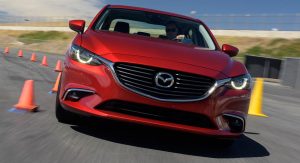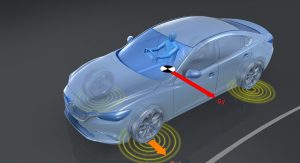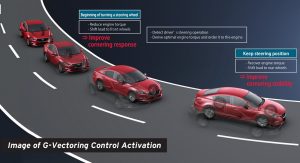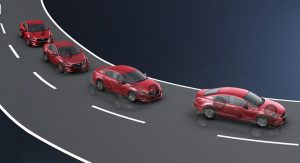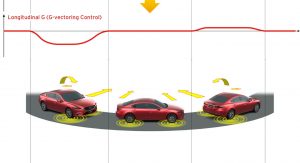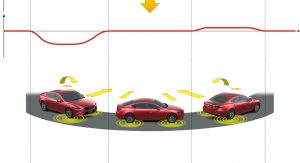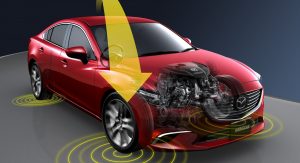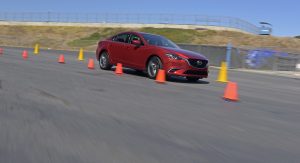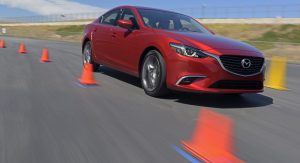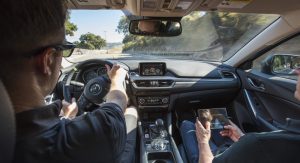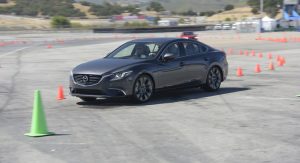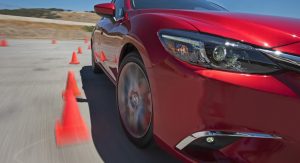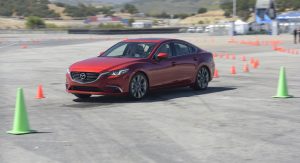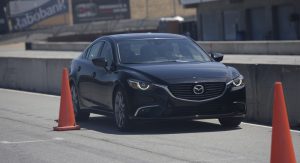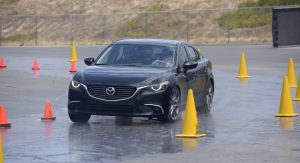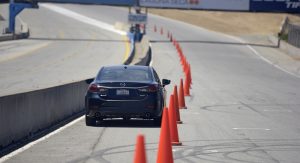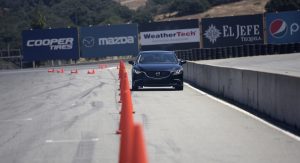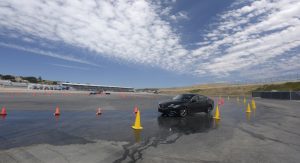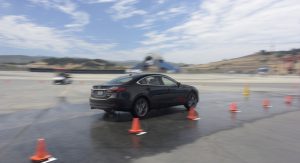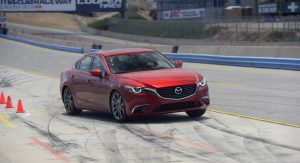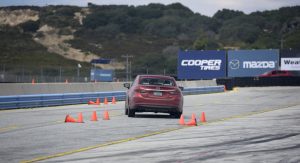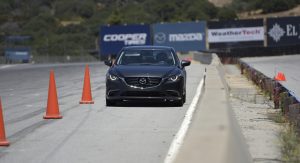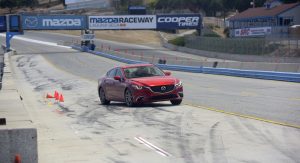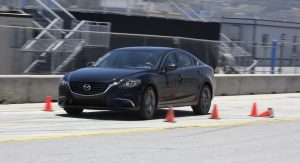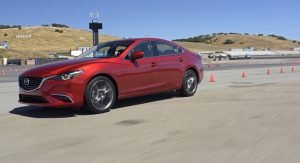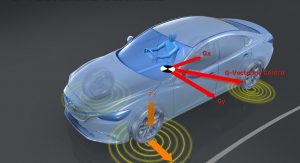Part of Mazda’s new vehicle motion control technologies, the G-Vectoring Control system will be introduced across the Japanese automaker’s entire model range, starting with the 2017 Mazda Axela, aka Mazda3.
US customers won’t get the system until later this year when it’s scheduled to appear on the 2017 Mazda6. Also known as GVC (G-Vectoring Control), this technology represents the world’s first control system to vary engine torque in response to steering inputs.
In turn, this provides better control of lateral and longitudinal acceleration forces and “optimizes the vertical load on each wheel for smooth and efficient vehicle motion.” Furthermore, by optimizing the load on each tire, Mazda have managed to bring the movements of the car closer to what the driver originally intends when apply any sort of steering wheel input, thus reducing the need for steering corrections.
According to Mazda, the system also provides better traction as well as improved handling and stability on wet, snowy and unpaved roads, benefiting drivers of all skill levels in multiple traffic situations such as low-speed urban commutes, winding roads, highway driving and even emergency maneuvers.
The ultimate goal here is to enhance the vehicle’s “Jinba Ittai’ feel, which is the connection the driver feels with his car – in line with the automaker’s human-centered vehicle development philosophy which “focuses on using human physiology and psychology to design a more enjoyable vehicle experience.”
Make sure to check out the videos in order to have a better understanding of how the system works. The car they used in order to demonstrated how GVC operates is a Mazda6 2WD model with regular tires.
PHOTO GALLERY
VIDEO



![Mazda Details New-Gen SKYACTIV-VEHICLE Dynamics [w/Video]](https://www.carscoops.com/wp-content/uploads/2024/04/Hyundai-Ioniq-5-N-1024x576.jpg)
![Mazda Details New-Gen SKYACTIV-VEHICLE Dynamics [w/Video]](https://www.carscoops.com/wp-content/uploads/2024/04/2025-Toyota-4Runner-80-Stephen-Rivers-for-Carscoops-copy-1024x576.jpg)
![Mazda Details New-Gen SKYACTIV-VEHICLE Dynamics [w/Video]](https://www.carscoops.com/wp-content/uploads/2024/04/2025_Toyota_4Runner_TRDPro_Mudbath_049-copy-1024x576.jpg)
![Mazda Details New-Gen SKYACTIV-VEHICLE Dynamics [w/Video]](https://www.carscoops.com/wp-content/uploads/2024/04/ythgvf-1024x576.jpg)
![Mazda Details New-Gen SKYACTIV-VEHICLE Dynamics [w/Video]](https://www.carscoops.com/wp-content/uploads/2016/07/mazda-g-vectoring-tech-34.jpg)
